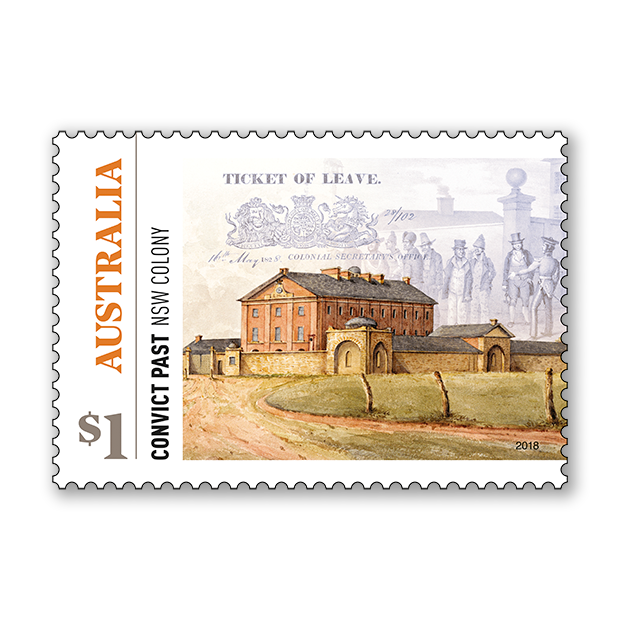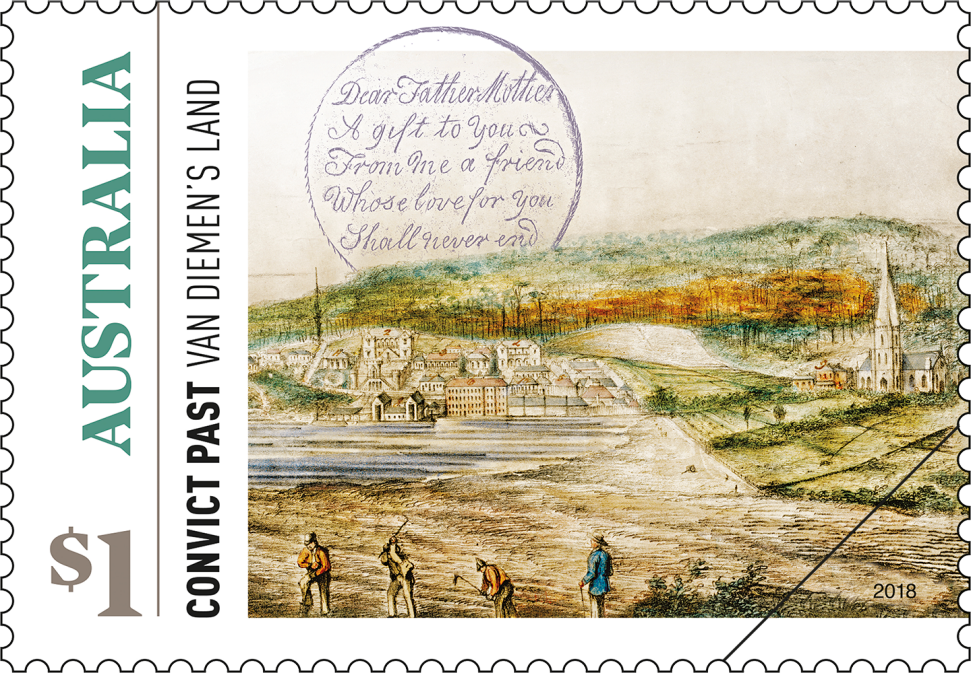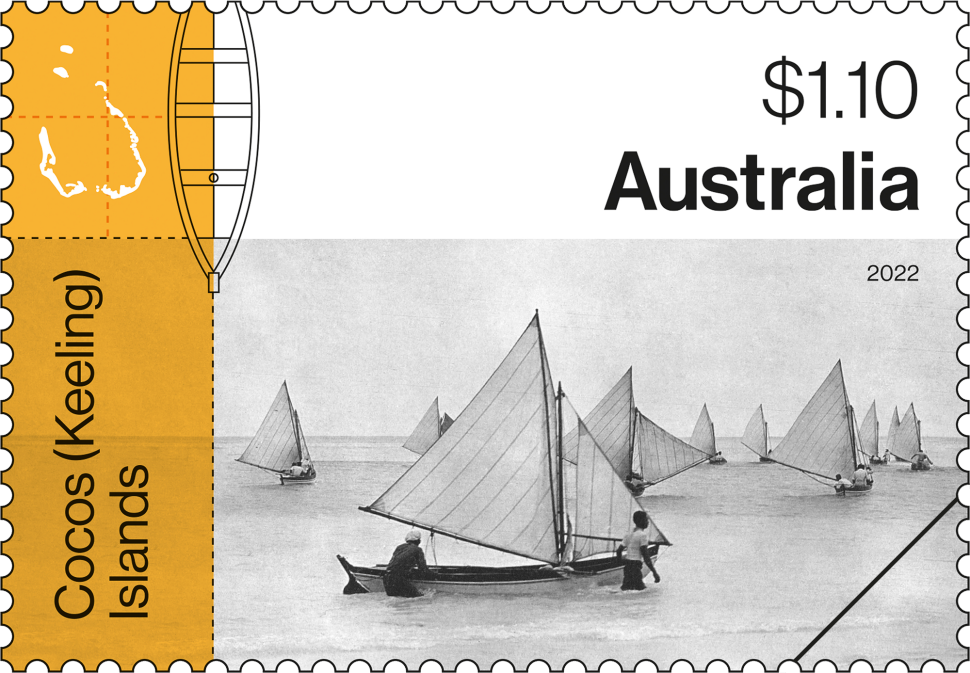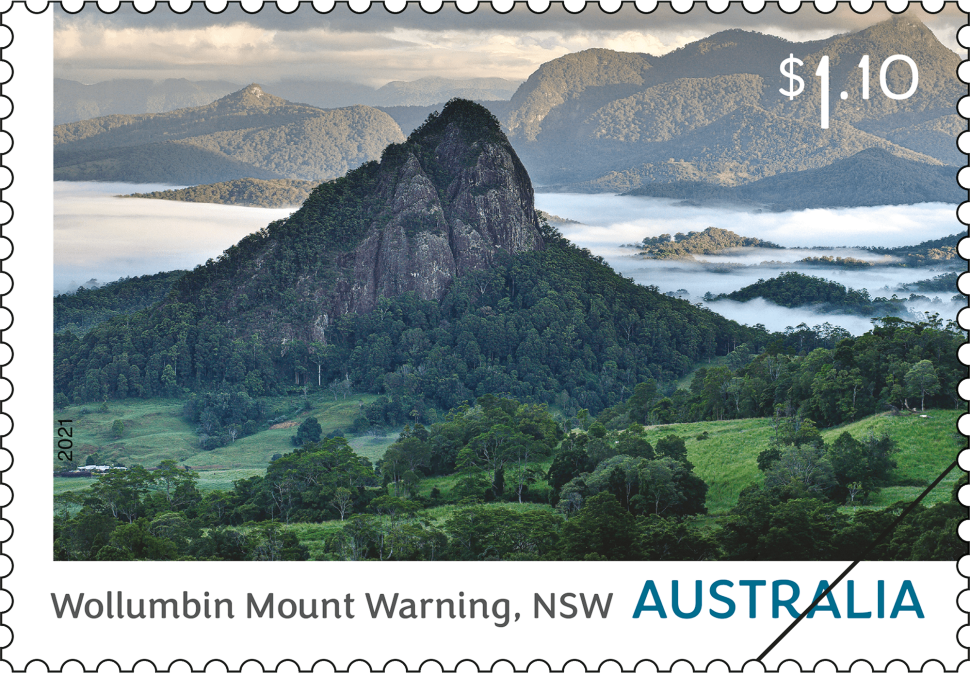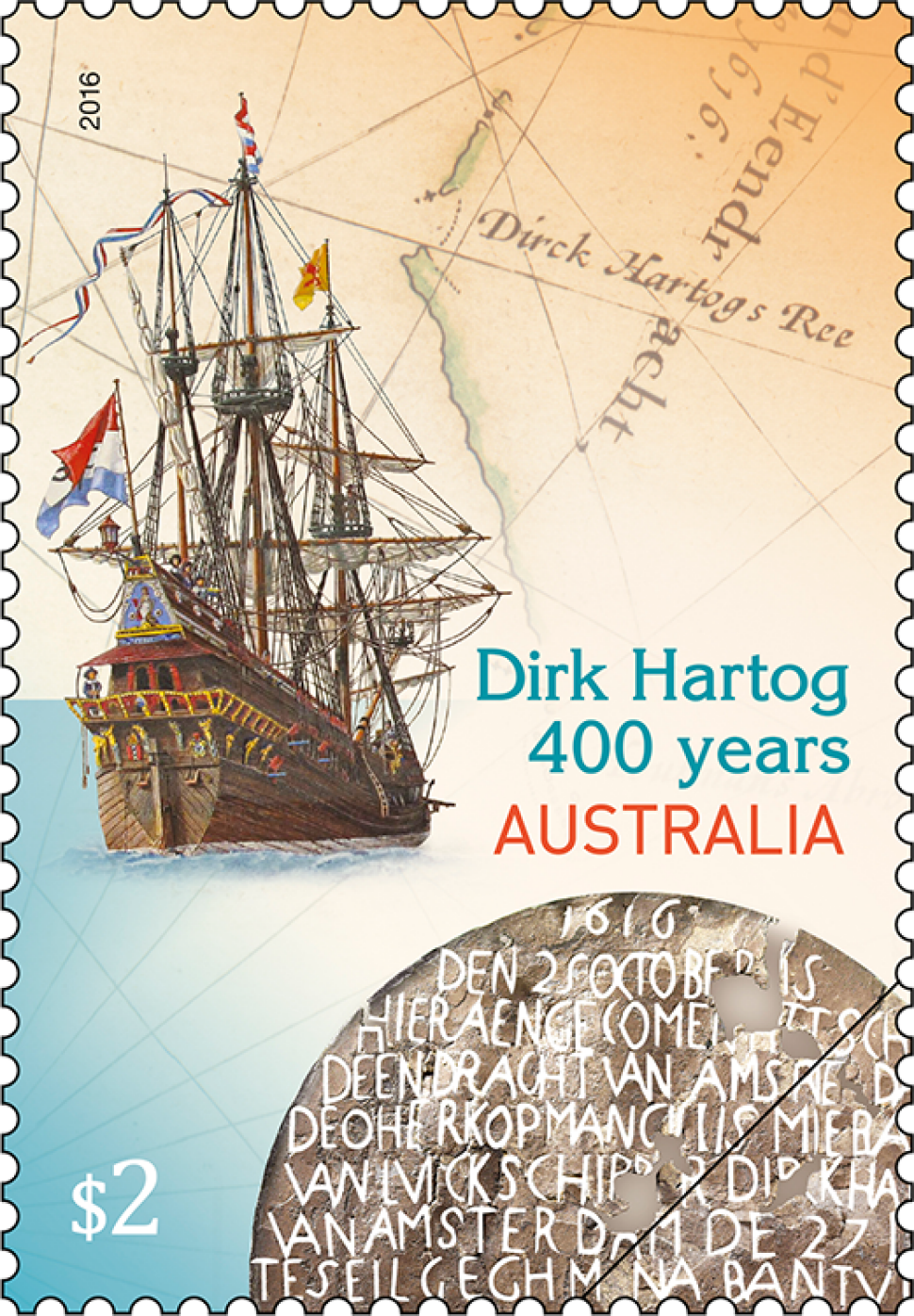This stamp issue commemorates the end of convict transport to the Australian colonies. In January 2018, it will be 150 years since the last convict ship, the Hougoumont, docked in Australia, at the Swan River Colony in 1868. Between the arrival of the First Fleet, in 1778, and the cessation of convict transportation, some 165,000 convicts arrived here to be punished for their crimes, whether political activities or something as trivial as stealing a loaf of bread.
Initially, convicts were sent to the colony of New South Wales, but into the 19th century Norfolk Island, Van Diemen’s Land, Port Macquarie and Moreton Bay were all convict destinations. Though initially colonised by free settlers, Swan River (Western Australia) also became a location for convict detention.
The stamps present the penal colonies of New South Wales, Van Diemen’s Land and Swan River through depictions of the main places of incarceration, as well as items that illuminate aspects of convict life and give voice to some of those transported for their crimes.
The historical imagery is from the collections of the State Library of New South Wales, the National Library of Australia and the National Museum of Australia.
Products released in this issue
- Stamp pack
- First day cover
- Maxicards
- Postal and numismatic cover
- Sheetlet of 10 x $1 stamps
- Booklet of 5 x $3 stamps
- Roll of 100 x $1 stamps
Technical specifications
- Issue date
- 16 January 2018
- Issue withdrawal date
- 31 July 2018
- Denominations
- 2 x $1, 1 x $3
- Stamp design
- Tim Hancock
- Product design
- John White, Australia Post Design Studio
- Printer
- RA Printing
- Paper - gummed
- Tullis Russell
- Paper - self-adhesive
- Securepost MC 90
- Printing process
- Offset lithography
- Stamp size
- 37.5mm x 26mm
- Perforations
- 14.60 x 13.86
- Sheet layout
- Module of 50 (no design)
- FDI postmark
- Fremantle WA 6160
- FDI withdrawal date
- 14 February 2018
Heritage-listed Hyde Park Barracks, Sydney, has a long association with Australia’s convict past and was the first government-built convict barracks. Opened in 1819, around 30 years after the arrival of the colony’s first convicts, it served as a principal depot for male convicts in New South Wales until 1848. Its main building was then converted into Sydney’s female immigration depot, and the barracks was also used as a female asylum.
Perhaps ironically, the barracks was designed by one of Australia’s notable early convicts, Francis Greenway, who is considered Australia’s first architect and the first official government architect. Hyde Park Barracks marked a shift in convict management by allowing for more systematic control and surveillance of its inmates.
The stamp design also shows the ticket of leave, no. 28/102, issued to William Anson on 16 May 1828, signed by Colonial Secretary Alexander McLeay. A ticket of leave could be earnt for good behaviour after serving a period of one’s sentence. The design also shows a lithograph of a Sydney convict chain gang, the original artwork by Augustus Earle.
Known as Van Diemen’s Land until 1856, Tasmania was the place of incarceration for around 40 per cent of Australia’s convicts between 1830 and 1877. Around 75,000 convicts had been sent to the colony by the time transportation to Van Diemen’s Land was abolished. The World Heritage–listed Port Arthur is Tasmania’s most recognisable sign of its convict past, and arguably Australia’s too, and the penitentiary is one of the most recognisable of the site’s several buildings. Having imported a British penal system, Port Arthur used a regime of forced labour to punish and reform those it incarcerated, with the products of their labour benefiting government and private markets. By 1835, some 800 convicts at Port Arthur worked in punishing chain gangs.
The design also features a graphic from a convict love token, thought to relate to John Camplin. The 15 year old was convicted of stealing a silver watch – for which he received the death penalty, later commuted to life imprisonment – and was transported to Van Diemen’s Land on the Surrey, in September 1818:
Dear Father Mother / A gift to you – / from me a friend / Whose love for you / Shall never end / 1818
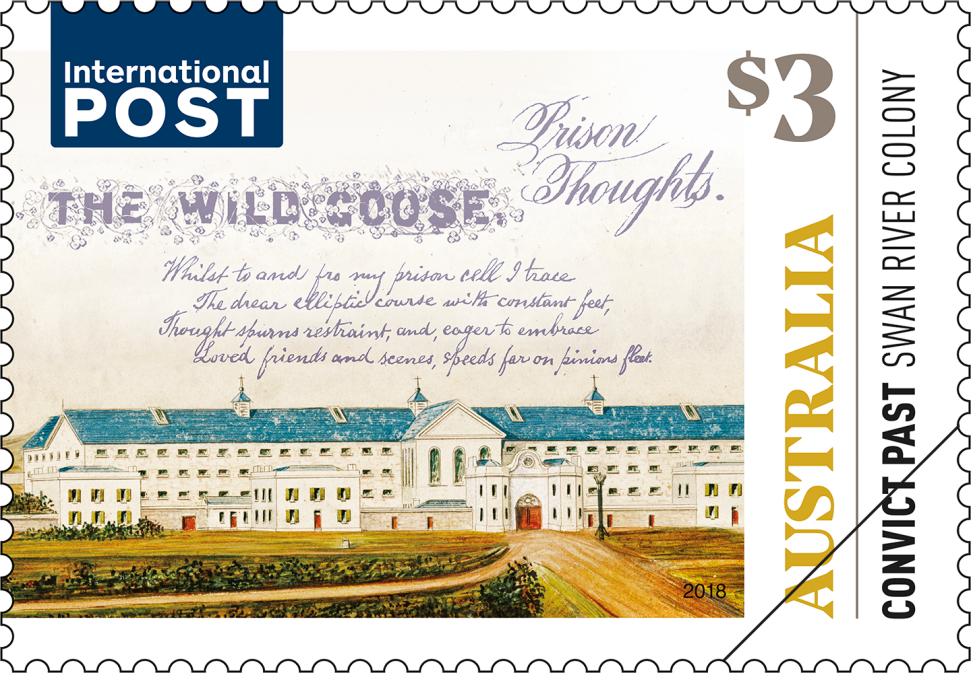
Designed and erected by Lieutenant Henry Wray and Captain Edmund Henderson, the Convict Establishment, known as Fremantle Prison from 1867, was built in the early 1850s. Between 1852 and 1859, convicts toiled on the construction of a place that would become the site of their imprisonment. It was built using limestone quarried onsite.
The first prisoners were held in the main cell block from 1855, five years after the first transportation ship, the Indiaman Scindian, arrived at Fremantle and 13 years before the last transportees arrived on the Houguoumont. Close to 10,000 men were held in this prison during the era of transportation; it continued to be used as a place of confinement until 1991.
The stamp design also shows a fragment of text from The Wild Goose, a newspaper written by the political prisoners aboard the Hougoumont, the last convict ship to Australia. In his ‘Prison Thoughts’, Laoi writes:
Whilst to and fro my prison cell I trace / The drear elliptical course with constant feet, / Thought spurns restraint, and, eager to embrace / Loved friends and scenes, speeds far on pinions fleet
This content was produced at the time of the stamp issue release date and will not be updated.

